



H223-V10-AAW1
HPC/AI Arm Server - NVIDIA GH200 Grace Hopper Superchip - 2U 2-Node 8-Bay Gen5 NVMe
Stepping Further into the Era of AI and GPU-Accelerated HPC
Moving beyond pure CPU applications, the NVIDIA GH200 Grace Hopper Superchip is built on a combination of an NVIDIA Grace™ CPU and an NVIDIA H100 Tensor Core GPU for giant-scale AI and HPC applications. Utilizing the same NVIDIA® NVLink®-C2C technology, combining the heart of computing on a single superchip, forming the most powerful computational module. The coherent memory design leverages both high-speed HBM3 or HBM3e GPU memory and the large-storage LPDDR5X CPU memory. The superchip also inherits the capability of scaling out with InfiniBand networking by adopting NVIDIA BlueField®-3 DPUs or NICs, forming a system connected with a speed of 100GB/s for ML and HPC workloads. The upcoming NVIDIA GH200 NVL32 can further improve deep learning and HPC workloads by connecting up to 32 superchips through the NVLink Switch System, a system built on NVLink switches with 900GB/s bandwidth between any two superchips, making the most use of the powerful computing chips and extended GPU memory.
NVIDIA GH200 Grace Hopper Superchip
72 Arm Neoverse V2 Cores
Armv9.0-A architecture for better compatibility and easier execution of other Arm-based binaries.
96GB HBM3 or 144GB HBM3e GPU memory
Adoption of high-bandwidth-memory for improved performance of memory-intensive workloads.
Up to 4x PCIe Gen5 x16 links
Multiple PCIe Gen5 links for flexible add-in cards configurations and system communication.

InfiniBand Networking Systems
Designed with maximum scale-out capability with up to 100GB/s total bandwidth across all superchips through InfiniBand switches, BlueField-3 DPUs, and ConnectX-7 NICs.
Up to 480GB CPU LPDDR5X memory with ECC
Balancing between bandwidth, energy efficiency, capacity, and cost with the first data center implementation of LPDDR technology.
NVIDIA® NVLink®-C2C Technology
Industry-leading chip-to-chip interconnect technology up to 900GB/s, alleviating bottlenecks and making coherent memory interconnect possible.
Easy-to-Program Heterogeneous Platform
Bringing preferred programming languages to the CUDA platform along with hardware-accelerated memory coherency for simple adaptation to the new platform.
H223-V10-AAW1 Block Diagram

H223-V10-AAW1 Product Overview

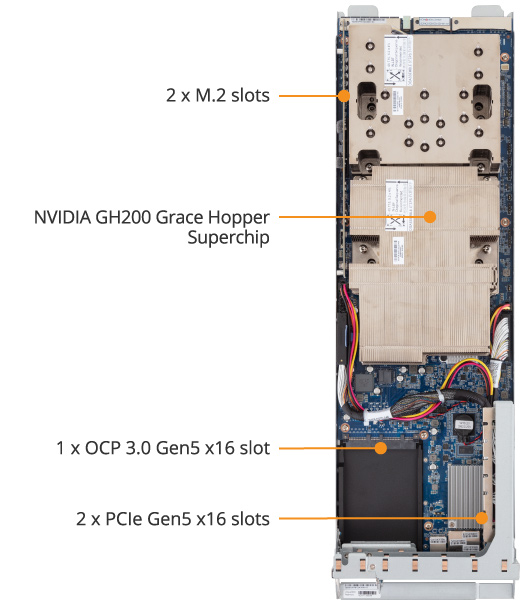
Power Efficiency
Automatic Fan Speed Control
GIGABYTE servers are enabled with Automatic Fan Speed Control to achieve the best cooling and power efficiency. Individual fan speeds will be automatically adjusted according to temperature sensors strategically placed in the servers.


Cold Redundancy
To take advantage of the fact that a PSU will run at greater power efficiency with a higher load, GIGABYTE has introduced a power management feature called Cold Redundancy for servers with N+1 power supplies. When the total system load falls lower than 40%, the system will automatically place one PSU into standby mode, resulting in a 10% improvement in efficiency.
High Availability
Smart Ride Through (SmaRT)
To prevent server downtime and data loss as a result of loss of AC power, GIGABYTE implements SmaRT in all our server platforms. When such an event occurs, the system will throttle while maintaining availability and reducing power load. Capacitors within the power supply can supply power for 10-20ms, which is enough time to transition to a backup power source for continued operation.


Smart Crises Management and Protection (SCMP)
SCMP is a GIGABYTE patented feature which is deployed in servers with non-fully redundant PSU design. With SCMP, in the event of faulty PSU or overheated system, the system will force the CPU into an ultra-low power mode that reduces the power load, which prevents the system from unexpected shutdown and avoids component damage or data loss.
Hardware Security
Optional TPM 2.0 Module
For hardware-based authentication, the passwords, encryption keys, and digital certificates are stored in a TPM module to prevent unwanted users from gaining access to your data. GIGABYTE TPM modules come in either a Serial Peripheral Interface or Low Pin Count bus.


User Friendly
Tool-less Drive Bays Design
Clipping mechanism secures the drive in place. Install or replace a new drive in seconds.
OCP 3.0 Ready
GIGABYTE offers servers that feature an onboard OCP 3.0 slot for the next generation of add on cards. Advantages of this new type include:
- Easy Serviceability:
Simply slot in or pull out the card, without opening the server or using tools - Improved thermal design:
Horizontal position and optimal heat sink design allow for air cooling to eliminate the heat efficiently
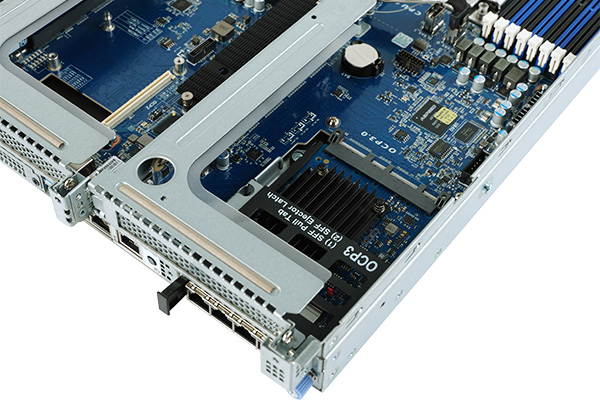
Chassis Management Controller (CMC)
GIGABYTE H-Series servers feature CMC* for chassis-level management and multi-node monitoring by connecting nodes internally via BMC integrated on each node to the CMC. This results in easier managment as there are less cables and network switch connections needed.
* IPMI only, no iKVM functionality
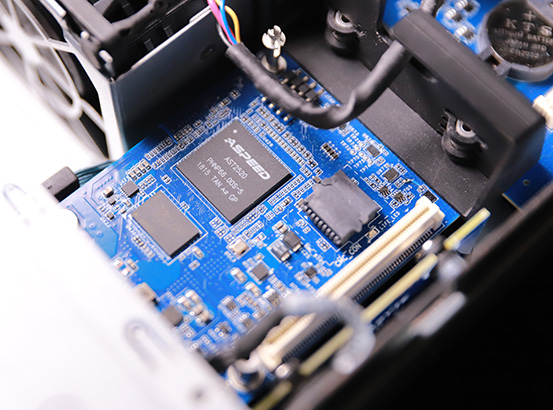
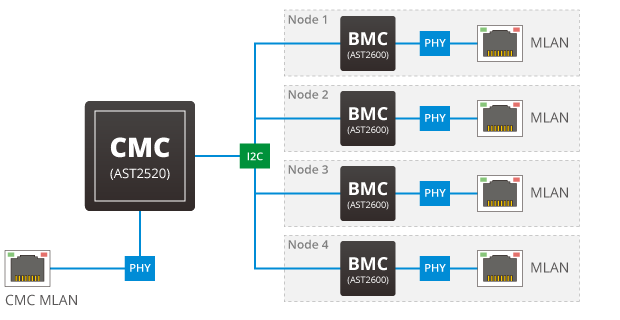
Ring Topology Management
GIGABYTE H-Series servers feature the ability to create a “ring” connection for monitoring & management of all servers in a rack for greater cost savings and management efficiency.
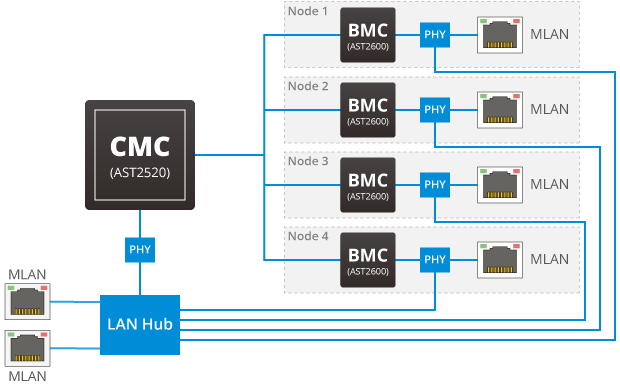
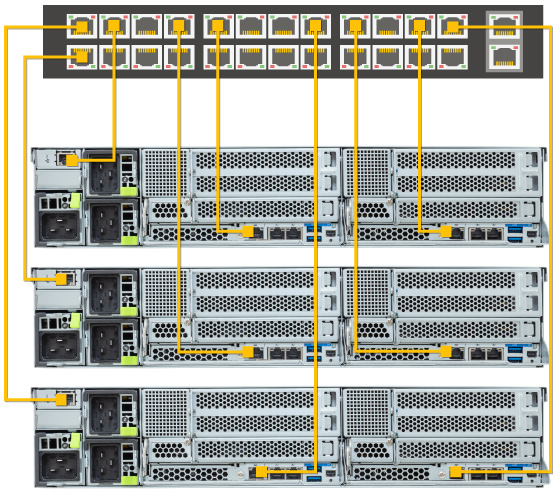
Typical Network Topology
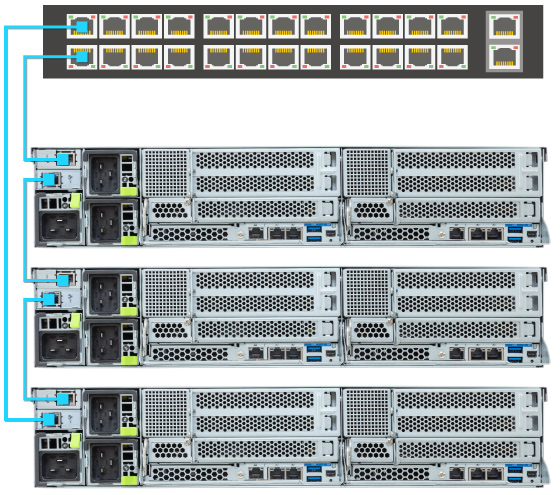
Using CMC & Ring Topology Kit
Value-added Management
GIGABYTE offers free-of-charge management applications via a specialized small processor built on the server.
GIGABYTE Management Console
For management and maintenance of a server or a small cluster, users can use the GIGABYTE Management Console, which is pre-installed on each server. Once the servers are running, IT staff can perform real-time health monitoring and management on each server through the browser-based graphical user interface. In addition, the GIGABYTE Management Console also provides:
- Support for standard IPMI specifications that allows users to integrate services into a single platform through an open interface
- Automatic event recording, which can record system behavior 30 seconds before an event occurs, making it easier to determine subsequent actions
- Integrate SAS/SATA/NVMe devices and RAID controller firmware into GIGABYTE Management Console to monitor and control Broadcom® MegaRAID adapters.
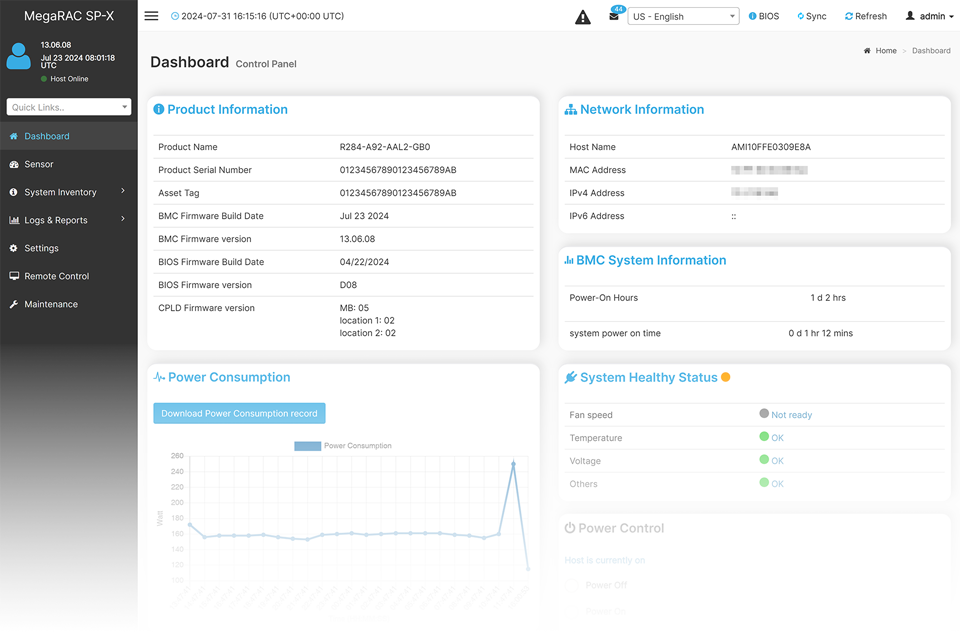
GIGABYTE Server Management (GSM)
GSM is a software suite that can manage clusters of servers simultaneously over the internet. GSM can be run on all GIGABYTE servers and has support for Windows and Linux. GSM can be downloaded from GIGABYTE website and complies with IPMI and Redfish standards. GSM includes a complete range of system management functions that includes the following utilities:
- GSM Server: A software program that provides real-time, remote control using a graphical user interface through an administrator’s computer or through a server in the cluster. The software allows ease of maintenance for large clusters of servers.
- GSM CLI: A command-line interface for monitoring and managing remotely.
- GSM Agent: A software program installed on each GIGABYTE server node that retrieves information from each system and devices through the OS, and this software integrates with GSM Server or GSM CLI.
- GSM Mobile: A mobile app for both Android and iOS that provides admins with real-time system information.
- GSM Plugin: An application program interface that allows users to use VMware vCenter for real-time monitoring and management of server clusters.


* The entire materials provided herein are for reference only. GIGABYTE reserves the right to modify or revise the content at anytime without prior notice.
* Advertised performance is based on maximum theoretical interface values from respective Chipset vendors or organization who defined the interface specification. Actual performance may vary by system configuration.
* All trademarks and logos are the properties of their respective holders.
* Due to standard PC architecture, a certain amount of memory is reserved for system usage and therefore the actual memory size is less than the stated amount.















